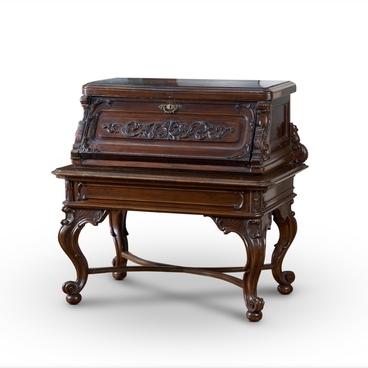The collection of the Belgorod State Historical and Local History Museum includes a telephone set made by the Erickson company in the late 19th — early 20th century.
At the forefront of Russian telecommunication in the late 19th and early 20th centuries was the Swedish company Ericsson. In 1876, Lars Magnus Ericsson founded electromechanical workshops in Stockholm.
In the Belgorod district, the first public telephone connection appeared at the very beginning of the 20th century. At that time, the nearby cities of Kharkov and Kursk were already equipped with telephones. The initiative to create telephone communication in Belgorod was taken by the district council.
In September 1901, the Kharkov technical office “Olshevich and Kern” developed and submitted to the district council a plan for the telephone network of the Belgorod district. It was proposed to install 19 telephone stations. According to the estimates, it was decided to purchase and install a central telephone exchange with 100 numbers from the “L.M. Ericsson & Co.” factory at a cost of 750 rubles. 19 table or wall telephone sets at a price of 50 rubles each were ordered as well. The telecommunication process in the Belgorod district progressed successfully, and in 1903, the telephone network began operating.
In Belgorod, at the central station located on Verkhne-Meshchanskaya Street, where the House of Life on Narodny Boulevard is now situated, a line switchboard for 100 single stations of the Ericsson system was installed. The subscriber sets were also of this system.
The telephone sets from the Ericsson company were inexpensive, distinguished by high quality, and had a loud, clear sound, successfully competing with the sets produced by Alexander Bell’s company, which also manufactured telephones.
With the opening of the district network, the telephonization of Belgorod began. On July 1, 1908, a private telephone network started operating in the city, servicing only the city itself.
The Ericsson telephone displayed in the exhibition used to be installed at the Belgorod railway station.
In the early 20th century, Ericsson was a market leader in telephone exchanges — the very ones where operators manually connected subscribers by inserting wires with plugs into the sockets on vast switchboard panels.



